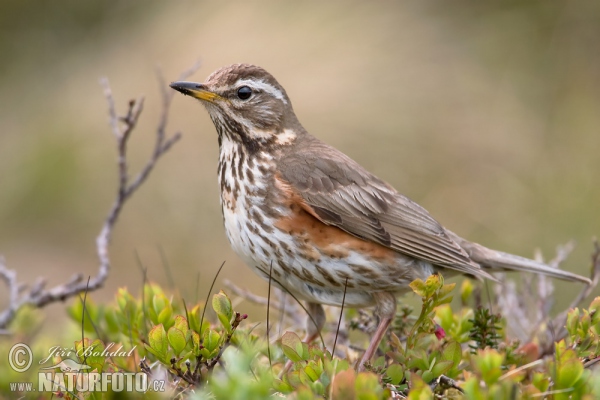
Our countryside is inundated with thousands of visitors flying in from the northern regions of continental Europe. These ‘tourists’ spread themselves in loose flocks over the greener fields and bushier hedges. They are known as the ‘winter thrushes’. Older people called them ‘siocáns’, meaning ‘the frost birds’ as their arrival coincides with a drop in temperatures and the beginning of the winter frosts, so this is the perfect week to give them a few moments’ thought. The siocán is actually a fieldfare - a bird somewhat bigger than a blackbird. The first sign of its arrival may well be the quick cackle of its flight call – sounding like ‘cack-cack-cack-cack’. This is delivered as it flies high above the tallest trees. It is a striking bird with a grey head and rump, dark brown back and wings, spotted breast and black tail and wingtips.
Its cousin the redwing is often the more numerous, traveling in large flocks and staying in close contact with each other. This smaller bird is very like a songthrush, but can be distinguished from it by the noticeable cream-coloured stripe above the eye. There is also a reddish patch under the wing which is very conspicuous in flight and which gives it its name. Even at night it can be identified as it flies overhead by its high pitched ‘tzeep’ call. Its Irish name is appropriately ‘deargán sneachta’ –or ‘the red snow bird’.
Neither of these thrushes breed here, but for the winter months watch out for them loosely scattered over the greener fields, hopping along and pausing now and again to pick up a tasty worm or other invertebrate. Fieldfare and redwing are often to be seen helping themselves to the bright red berries of hawthorn, yew and rowan. If you have had your eye on a beautiful sprig of holly flush with red berries for the Christmas decorations, only to go out one day and found it stripped bare, there is a good chance that the redwing or fieldfare have beaten you to it! They seem to be a lot more numerous this year. Their coming south equates to us heading off to the Riviera for a winter break!
May we at Cabragh Wetlands wish you all a very happy and peaceful Christmas, and take this chance to thank the many people who have supported our work over the course of the year.

.JPG)















